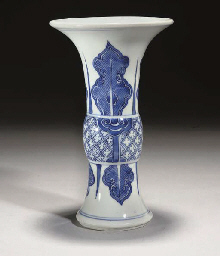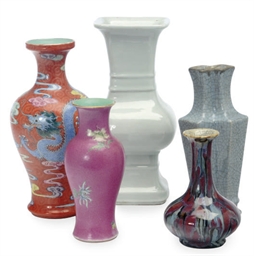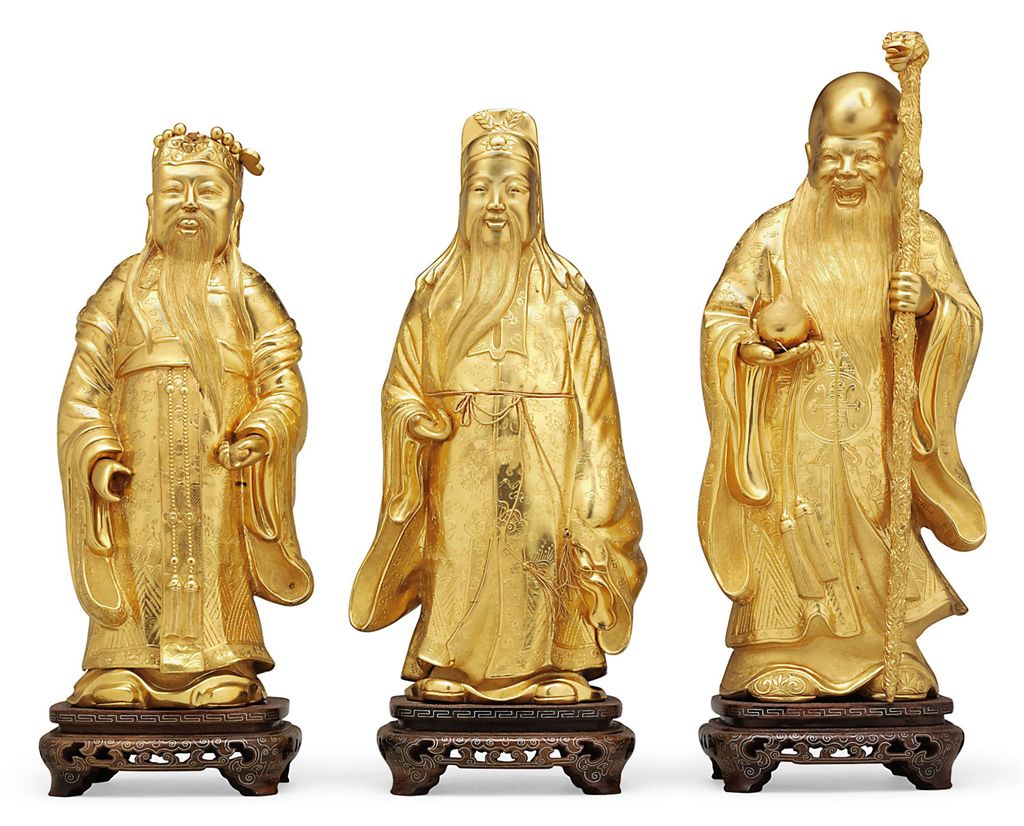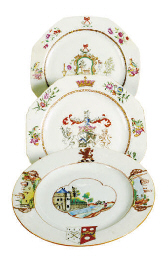Group of Three Chinese Turquoise, Yellow, Green and Aubergine Glazed Wall Tiles Late Ming/Early Qing Dynasty Forming a continuous scene which depicts a story from the Xiyouji (Journey to the West); the first tile depicts the Zhu Baije (pig) carrying the Buddhist texts across his shoulders leaving a gateway and pagoda, the second depicts two figures carrying lanterns in a rocky landscape with a tree, one presumably Sha Wujing; and the third tile appears to show Xuanzong himself being cooled by another assistant priest holding a fan, with the head of the white horse (dragon horse), who also went on the journey. Length overall 74 inches. C
Note: 'Journey to the West' is one of the Four Great Classical Novels of Chinese literature. It was written in the 16th century during the Ming Dynasty and attributed to Wu Cheng'en. The novel is a fictionalized account of the legendary pilgrimage to India of the Buddhist monk Xuanzong and loosely based its source from the historic text Great Tang Records on the Western Regions and traditional folk tales. The monk travelled to the 'Western Regions' during the Tang Dynasty to obtain sacred texts (sutras). The bodhisattva Avoliketesvara (Guanyin) on instruction from the Buddha, gives this task to the monk and his three protectors in the form of disciples - namely Sun Wukong, the monkey, Zhu Baije, the pig, and Sha Wujing, a prince- together with a dragon prince who acts as Xuanzang's steed, a white horse. These four characters have agreed to help Xuanzong as an atonement for past sins. 'Journey to the West' has a strong background in Chinese folk religion, Chinese mythology and value systems; the pantheon of Daoist immortals and Buddhist bodhisattvas is still reflective of Chinese religious beliefs today. Enduringly popular, the tale is at once an adventure story, a spring of spiritual insight
Group of Three Chinese Turquoise, Yellow, Green and Aubergine Glazed Wall Tiles Late Ming/Early Qing Dynasty Forming a continuous scene which depicts a story from the Xiyouji (Journey to the West); the first tile depicts the Zhu Baije (pig) carrying the Buddhist texts across his shoulders leaving a gateway and pagoda, the second depicts two figures carrying lanterns in a rocky landscape with a tree, one presumably Sha Wujing; and the third tile appears to show Xuanzong himself being cooled by another assistant priest holding a fan, with the head of the white horse (dragon horse), who also went on the journey. Length overall 74 inches. C
Note: 'Journey to the West' is one of the Four Great Classical Novels of Chinese literature. It was written in the 16th century during the Ming Dynasty and attributed to Wu Cheng'en. The novel is a fictionalized account of the legendary pilgrimage to India of the Buddhist monk Xuanzong and loosely based its source from the historic text Great Tang Records on the Western Regions and traditional folk tales. The monk travelled to the 'Western Regions' during the Tang Dynasty to obtain sacred texts (sutras). The bodhisattva Avoliketesvara (Guanyin) on instruction from the Buddha, gives this task to the monk and his three protectors in the form of disciples - namely Sun Wukong, the monkey, Zhu Baije, the pig, and Sha Wujing, a prince- together with a dragon prince who acts as Xuanzang's steed, a white horse. These four characters have agreed to help Xuanzong as an atonement for past sins. 'Journey to the West' has a strong background in Chinese folk religion, Chinese mythology and value systems; the pantheon of Daoist immortals and Buddhist bodhisattvas is still reflective of Chinese religious beliefs today. Enduringly popular, the tale is at once an adventure story, a spring of spiritual insight












.jpg)


Testen Sie LotSearch und seine Premium-Features 7 Tage - ohne Kosten!
Lassen Sie sich automatisch über neue Objekte in kommenden Auktionen benachrichtigen.
Suchauftrag anlegen